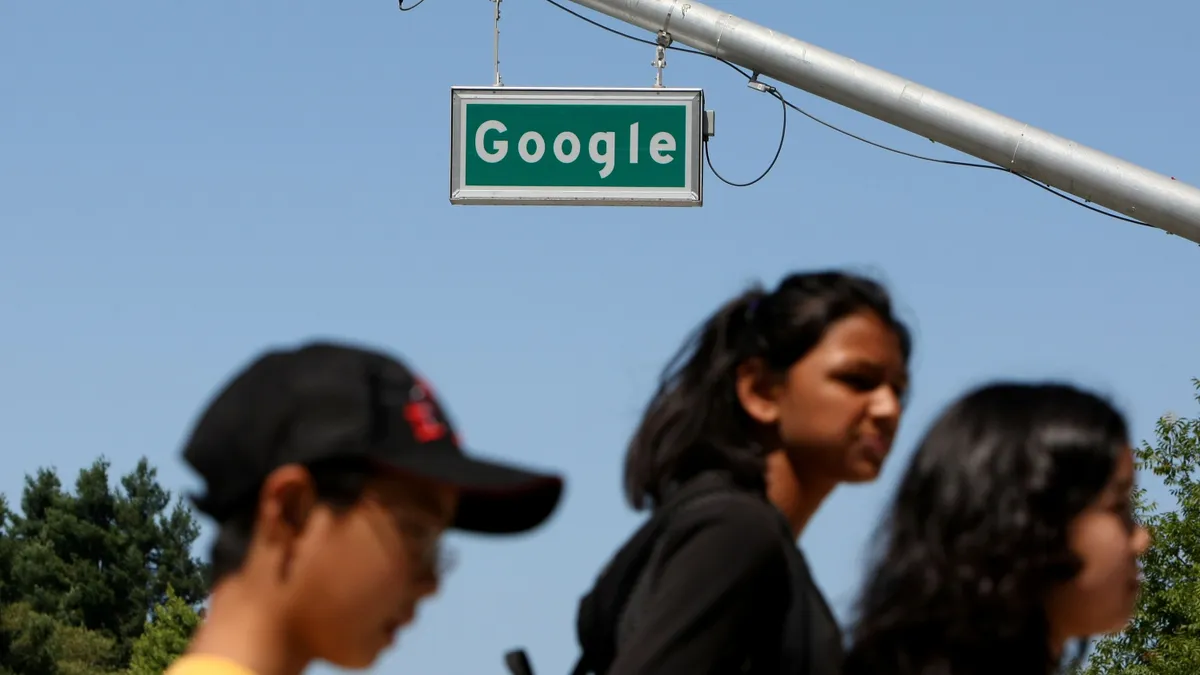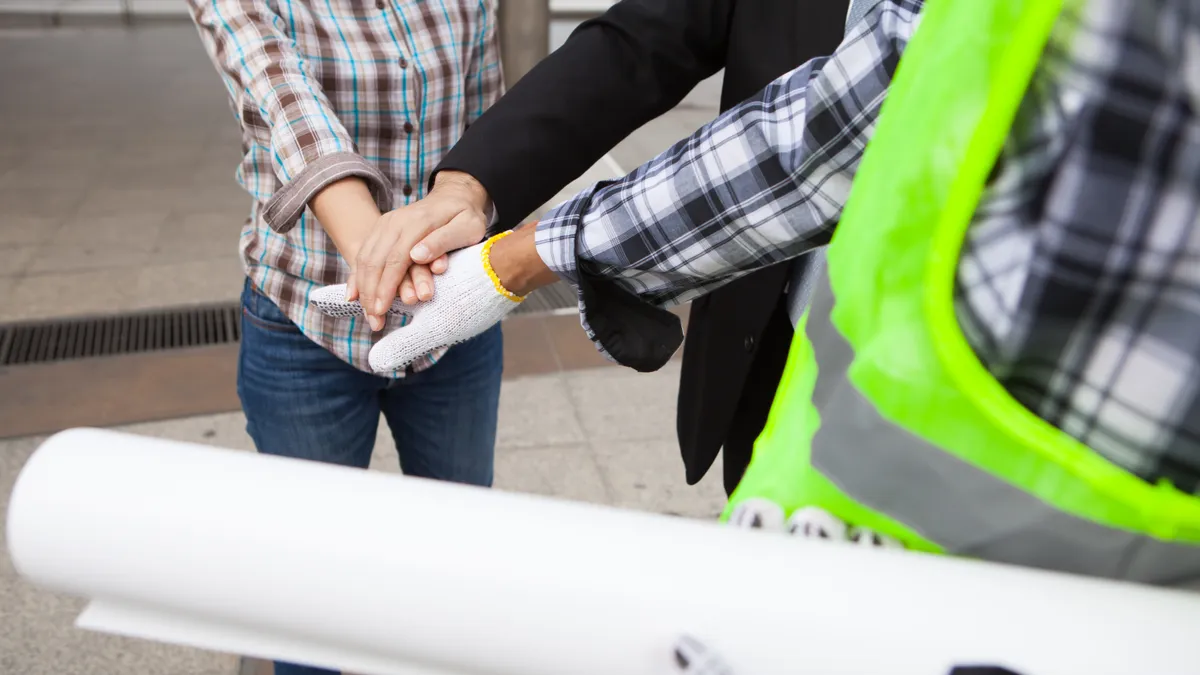Of all the industries that have embraced remote work, perhaps none have done so more rapidly and enthusiastically than the tech sector.
Digital product companies InVision and Automattic were remote for years before the pandemic struck. Project management software company Basecamp literally wrote the book on remote work, having operated as such for more than 20 years. And as companies around the world set and reset their return-to-work dates, Twitter, Spotify and others announced remote work would be available permanently for employees who preferred it.
That has translated to a whole lot of empty buildings in downtown San Francisco.
"What I hear anecdotally from friends is that it's pretty much a ghost town now," Max Wesman, founder and chief operating officer of employment screening company GoodHire, told HR Dive. GoodHire is based in Redwood City, right in the heart of Silicon Valley, and Wesman remains a resident of the area. "Usually in downtown San Francisco at night, things were pretty dead. But during the day, things were more vibrant. Now, without office workers there during the day, things are going under."
The tech exodus isn't hard to understand. According to a recent Rocket Mortgage report, San Francisco is the most expensive real estate city in the country, with a median housing price of $1.3 million. While plenty of workers live outside San Francisco, nearby markets like San Jose and Fremont are nearly as hot. (And in Palo Alto, home to Stanford University, the median home costs $3.3 million, according to Redfin.) Even a generous tech salary only goes so far.
Wesman said he knows people who have left, due primarily to "the cost of living and, in particular, the desire to buy a home and have a comfortable life to raise a family."
As the pandemic drags on, the trend only seems to be accelerating. According to data provided by LinkedIn, from March to July 2021 compared to March to July 2020, "San Francisco was among the cities losing, on net, the most people," with a population loss of 16.6% — coming second only to Minneapolis.
Arrival gates
Where are people relocating to? Well… everywhere.
MoveBuddha investigated a widespread flirtation of tech workers with sunny Miami, a conversation that largely took place on Twitter among prominent tech investors. The discussion even drew the interest of Miami's mayor, Francis Suarez.
How can I help? https://t.co/hIC1k8ka1i
— Mayor Francis Suarez (@FrancisSuarez) December 5, 2020
The talk was apparently more than just that: Miami topped the list of migration destinations in LinkedIn's analysis (though the research was not limited to tech). Miami saw a population inflow increase of 18%.
Other Sun Belt cities like Tampa (+12%), Jacksonville (+16%) and Greenville (+15%) also saw population growth, suggesting what seems obvious enough: The remote work revolution may go hand in hand with people increasing their time spent outdoors, a reported side effect of the pandemic.
Smaller tech hubs are cropping up, too. Wesman said he'd heard most often of Austin, Nashville and San Diego as other cities that are attracting tech workers away from the Bay Area, with regions in Arizona, Utah and North Carolina growing as well.
Another trend from Wesman's perspective is tech workers moving outside Silicon Valley — but not too far. He knows plenty of people who "haven't necessarily moved out of state, but they've moved to lower-cost areas outside of Silicon Valley that are still within a driving distance."
Marin County, Sonoma County, east of the Bay — many people are relocating to areas where the housing market is a touch cooler but the office headquarters can still be accessed once or twice a week by a long, but manageable, commute.
"I think that there still is a perception that once COVID is behind us someday, there still will always be some element of an office or in-person meeting," Wesman said. While hybrid work will likely be the norm and most companies will probably shift to adopting smaller offices or co-working spaces, he believes certain traditional ways of seeing the workplace won't die so easily. "I think there is an implicit assumption that if you have more face time with senior management, your odds of moving up [in the company] improve, even if you're spending a lot of time on Zoom calls," he said.
A tale of two San Franciscos
Tech may be the sector for which the Bay Area is known, but what of all the other jobs that typically support those and other now-remote workers? The dry cleaners, grocery delivery workers, baristas, retail clerks and servers?
As Wesman noted, many small businesses have been closed to the public or strictly limited in service throughout the pandemic, putting them on the financial brink. And while capacity limits for businesses expired this past June, Randy Shaw, editor of progressive Bay Area media site BeyondChron, noted recently that many state and federal buildings remain closed along with so many of the private office buildings based downtown. "How can restaurants and other small businesses plan work schedules when they don't know if their customer base is returning this year?" he posed.
The situation has become even more perilous as a moratorium for rental evictions timed out at the end of September, with no plans for renewal. While "property owners are desperate to keep their spaces filled" and lease renegotiation is likely, according to sources who spoke with the San Francisco Chronicle, many small businesses fear they won't be able to resolve rental disputes due to their current state of financial precarity.
While small businesses in the Bay Area have been hit hard by the work-from-home transformation, some in the government and private industries are offering programs to help keep the heart of the city pumping. San Francisco's Office of Economic and Workforce Development offers loans to help shepherd businesses through the pandemic. Salesforce, a downtown San Francisco mainstay, recently launched a million-dollar grant program for small businesses, which they can use for basic needs like rent, salaries and hiring.
Meanwhile, essential workers have grown frustrated as well. In March, Bay Area organizers launched the Essential Workers Council, made up of a diverse group of workers from the South Bay. According to the San Jose Spotlight, the group "hopes to lobby elected leaders for more essential worker protections during and after the pandemic, such as higher wages, more widespread hazard pay, rent relief, stronger eviction protections and affordable childcare."
And if tech workers are struggling to buy homes in the Bay Area, it follows that the thousands of lower- and moderate-income workers in the region may be as well. Housing affordability has been regarded as a crisis in the region for years, and despite a draining population, the market continues to appreciate.
With tech workers fleeing, essential worker pushback and the rumblings of broader labor unrest across California and the U.S. in the coming weeks, an interesting end of the year may be in store for the Bay Area.






















